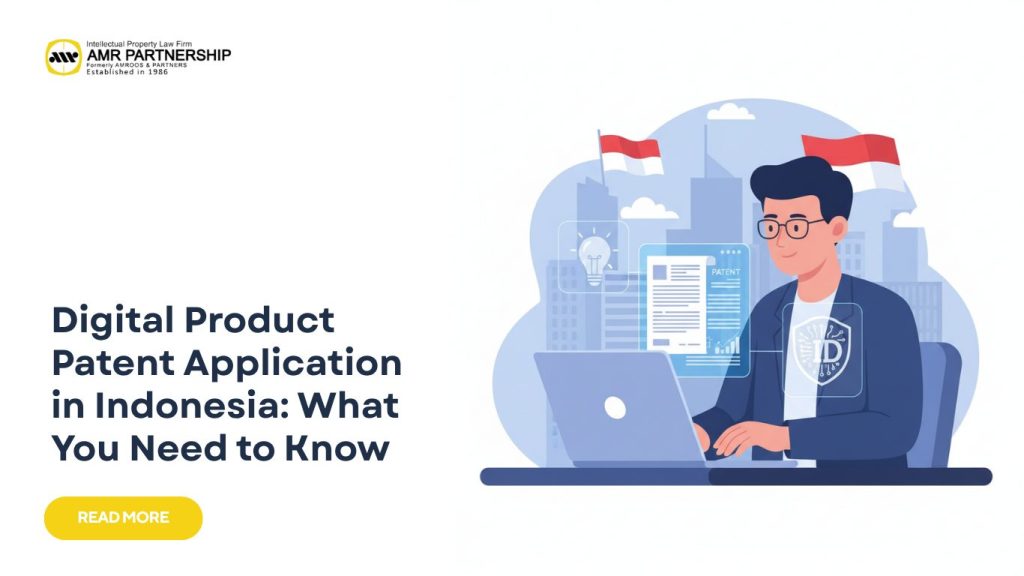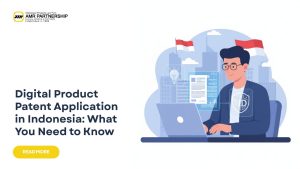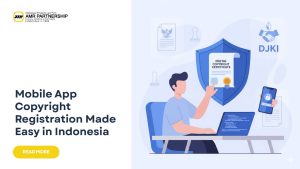
The growth of Indonesia’s digital economy has brought a wave of innovation across sectors—from fintech and healthtech to AI-driven logistics and e-commerce. As businesses race to create smarter digital products, protecting those innovations has become more critical than ever. That’s where the digital product patent application Indonesia plays a major role. It’s not just a legal process but a strategic step to secure your intellectual property and business value. If you want to ensure your innovation stays truly yours, understanding how to patent your digital product is essential. Learn more at amr.co.id for professional support in managing your patent registration and compliance needs.
READ MORE: The Real Challenges Behind Medical Device Patent Application Services
Why Patenting Your Digital Product Matters
Digital innovations are shaping how people work, trade, and connect. Yet, without proper protection, even the most unique algorithms or technological systems can be replicated by competitors. A patent gives inventors exclusive rights to make, use, and commercialize their invention within a defined period—usually 20 years.
For businesses in Indonesia, a patent is more than protection—it’s an investment in growth. It can:
- Increase your company’s valuation during funding or acquisition.
- Strengthen your position in partnership or licensing deals.
- Provide leverage against competitors who attempt to copy your product.
A digital product patent application in Indonesia covers innovative digital solutions that have a technical effect, like improved data processing systems, AI algorithms, or automated software processes. With Indonesia’s Ministry of Law and Human Rights (through DGIP) modernizing its digital filing system, obtaining protection is now more streamlined than before.
READ MORE: Design Patents in Fashion: How Style Meets Legal Protection
What Exactly Is a “Digital Product Patent”?
Not every app or website qualifies as a patentable digital product. Under Indonesian patent law, an invention must meet three core requirements:
- Novelty, the invention must be new and not publicly disclosed anywhere in the world.
- Inventive step, it must demonstrate a technical advancement not obvious to industry experts.
- Industrial applicability, the invention can be applied or produced in an industry.
This means a digital product patent typically applies to systems that use software to achieve a technical result.
Examples of What May Qualify
- A logistics algorithm that optimizes real-time route efficiency using AI.
- A fintech software that reduces transaction latency through unique encryption.
- A data compression method that minimizes storage without losing quality.
Examples That Usually Don’t Qualify
- A simple app layout or interface design.
- Pure business methods (like “a way to sell more online”) without technical implementation.
The distinction lies in technical contribution. If your innovation provides a measurable improvement in processing, security, or computation, it likely qualifies for a patent. Otherwise, other IP protections (like copyright or trademark) might be more suitable.
READ MORE: How Landmark Patent Cases Shape the Role of a Patent Lawyer in 2025
The Patent Application Journey Made Simple
Filing a digital product patent application in Indonesia might sound complex, but with the right guidance, it’s a straightforward process. Here’s how it generally works:
Step 1: Confirm Your Invention’s Novelty
Before filing, check whether your invention has already been patented. Conduct a prior art search through DGIP’s database or international patent databases (like WIPO). This prevents rejection and ensures your invention meets the novelty requirement.
Step 2: Prepare a Clear and Complete Description
When drafting your patent application, focus on how your invention works rather than just what it does. Include:
- Detailed technical explanations.
- Flowcharts and system diagrams.
- Implementation methods or sample code structures.
Avoid vague claims like “software that improves performance”—they often trigger rejections.
Step 3: File the Application Online
Applications are filed through the DGIP online system. You’ll need:
- Inventor and applicant details.
- Title and abstract of invention.
- Technical specification and claims.
- Proof of payment for filing fees.
Tip: You can claim priority from an earlier foreign patent within 12 months, based on the Paris Convention.
Step 4: Undergo Formality and Substantive Examination
After filing, DGIP reviews your application for completeness. Then, within 36 months, a substantive examination will evaluate novelty, inventive step, and industrial applicability. If approved, your patent is published and registered.
Quick Tip: Using clear technical diagrams and specific terminology can help speed up examination and reduce the risk of rejection.
READ MORE: How a Patent Company Interprets Global Biotech Innovation Trends Through Patent Strength
Common Mistakes When Filing a Digital Patent
Even the most innovative startups can make filing mistakes that slow down approval or cause rejection. Here are common pitfalls to avoid:
- Filing too early, submitting before your invention is fully developed can lead to incomplete claims.
- Skipping a prior art search, overlooking similar patents increases the risk of duplication.
- Blurring lines between copyright and patent, a patent protects functional innovations; a copyright protects creative expression.
- Insufficient technical disclosure, too many applications fail because they don’t explain how the system achieves its result.
A practical tip: engage a registered patent consultant early to assess your invention’s eligibility and optimize your application content. This ensures your claims are well-structured, avoiding costly rejections later.
READ MORE: How Leading Patent Law Firms in Indonesia Contribute to ASEAN Intellectual Property Diplomacy
What’s New: Annual Patent Working Statement Requirement
In late 2024, Indonesia introduced a new reporting requirement under the amended Patent Law. Patentees must now submit an Annual Patent Working Statement to the Directorate General of Intellectual Property (DGIP). This applies to all active patents, including digital ones.
What You Need to Know
- The statement declares whether the patented invention is used or commercialized in Indonesia.
- Accepted forms of implementation include local manufacturing, process utilization, importation, or licensing.
- If your patent isn’t implemented yet, you can state that fact.
- Submissions are made online using DGIP’s official template.
- The deadline is December 31 every year.
- No official fee is currently charged for this submission.
Why This Matters
Non-compliance can lead to:
- Compulsory licensing by third parties.
- Partial or full invalidation of the patent.
This new rule encourages active use of patented technologies and supports fair market access. For digital patent owners, it’s a reminder to review and report how your technology is deployed in Indonesia each year.
READ MORE: Understanding Patent Law and Its Challenges in the Age of Artificial Intelligence
Why Compliance Matters Even After You Get the Patent
A patent isn’t a one-time event; it’s an ongoing responsibility. Beyond the Annual Working Statement, patentees must pay annual maintenance (annuity) fees and ensure their patents remain active.
Benefits of Staying Compliant
- Maintains your legal rights and exclusivity.
- Enhances your company’s credibility during investment or due diligence.
- Reduces risk of disputes or legal exposure.
Compliance also signals your patent’s commercial value. When investors see consistent reporting, they perceive your technology as active, not dormant—making your business more attractive for partnerships or funding.
Filing your annual statement isn’t just bureaucracy—it’s proof that your invention contributes to Indonesia’s innovation ecosystem.
How Professional Legal Support Can Help
Patent law can be technical, especially for digital innovations. Working with experienced consultants ensures you get end-to-end assistance, from assessing patentability to managing compliance.
A professional patent team can help you:
- Evaluate if your digital invention meets Indonesia’s patent standards.
- Draft strong, defensible technical claims.
- Handle online filings with DGIP.
- Manage annuity payments and annual statements.
- Navigate international filings under WIPO if you plan to expand overseas.
Whether you’re a startup or an established tech firm, expert legal guidance simplifies your journey and prevents costly delays.
If you need tailored consultation or want to discuss pricing, you can reach the team directly through WhatsApp or Instagram for quick guidance and estimated service fees. Specific pricing details are available only after consultation, ensuring transparency and fairness for each client’s case.
READ MORE: Patent Search Price in Indonesia and What Foreign Applicants Need to Know
Turning Innovation Into a Long-Term Asset
Your digital product represents months (or years) of hard work, creativity, and technical expertise. Protecting it through a digital product patent application in Indonesia is the key to long-term success. With proper registration, annual compliance, and legal support, your intellectual property becomes more than a certificate—it becomes a business asset.
If you’re ready to secure your innovation, start by consulting the professionals at amr.co.id to discuss the right patent strategy for your product. Initial consultations are flexible, with transparent fee previews available through direct chat via WhatsApp. Your next step toward innovation security could begin today.
- Phone (Hunting): +62-21-29036668
- Fax: +62-21-29036672 to 75
- WhatsApp Customer Service: Click here to chat
- Instagram: @amrpartnership
- TikTok: @amr.partnership
- Facebook: Law Firm AMR Partnership
- Official Website: www.amr.co.id






